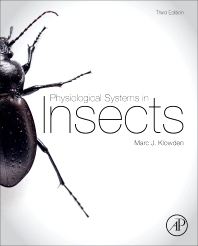Books in Agricultural and biological sciences
Books in Agricultural and biological sciences
The Agricultural and Biological Sciences collection advances science-based knowledge for the improvement of animal and plant life and for secure food systems that produce nutritious, novel, sustainable foods with minimal environmental impact. Food Science titles include not only those products from agriculture but all other aspects from food production to nutrition, health and safety, chemistry to security, policy, law and regulation. Biological Sciences address animal behaviour and biodiversity, organismal and evolutionary biology, entomology, marine biology and aquaculture, plant science and forestry.
- 1st Edition
- Volume 65
- June 10, 2013
- English
- Hardback9 7 8 0 1 2 4 1 0 4 9 8 3
- eBook9 7 8 0 1 2 4 1 0 5 3 4 8

Advances in Marine Biology
- 2nd Edition
- June 10, 2013
- Myer Kutz
- English
- eBook9 7 8 0 1 2 3 8 5 8 8 2 5

Handbook of Farm, Dairy and Food Machinery Engineering
- 1st Edition
- Volume 28
- June 8, 2013
- English
- Hardback9 7 8 0 4 4 4 5 9 5 2 8 7
- eBook9 7 8 0 4 4 4 5 9 5 2 9 4

Chemometrics in Food Chemistry
- 2nd Edition
- June 8, 2013
- Zeki Berk
- English
- Paperback9 7 8 0 1 2 8 1 0 0 5 6 1
- Hardback9 7 8 0 1 2 4 1 5 9 2 3 5
- eBook9 7 8 0 1 2 4 1 5 9 8 6 0

Food Process Engineering and Technology
- 3rd Edition
- Volume 38
- May 31, 2013
- John M. Lawrence
- English
- Hardback9 7 8 0 1 2 3 9 6 4 9 1 5
- eBook9 7 8 0 1 2 3 9 7 2 1 3 2

Sea Urchins
- 1st Edition
- May 29, 2013
- P. Michael Conn
- English
- Hardback9 7 8 0 1 2 4 1 5 8 9 4 8
- eBook9 7 8 0 1 2 4 1 5 9 1 2 9

Animal Models for the Study of Human Disease
- 1st Edition
- Volume 70
- May 27, 2013
- English
- Hardback9 7 8 0 1 2 4 1 6 5 5 5 7
- eBook9 7 8 0 1 2 4 1 6 5 7 2 4

Advances in Food and Nutrition Research
- 3rd Edition
- May 15, 2013
- Marc J. Klowden
- English
- Hardback9 7 8 0 1 2 4 1 5 8 1 9 1
- eBook9 7 8 0 1 2 4 1 5 9 7 0 9

Physiological Systems in Insects
- 1st Edition
- May 15, 2013
- Martin Rose + 1 more
- English
- Hardback9 7 8 0 8 5 7 0 9 2 4 5 8
- eBook9 7 8 0 8 5 7 0 9 8 9 1 7

Persistent Organic Pollutants and Toxic Metals in Foods
- 1st Edition
- Volume 64
- May 10, 2013
- English
- Hardback9 7 8 0 1 2 4 1 0 4 6 6 2
- eBook9 7 8 0 1 2 4 1 0 5 3 3 1

The Ecology and Biology of Nephrops Norvegicus